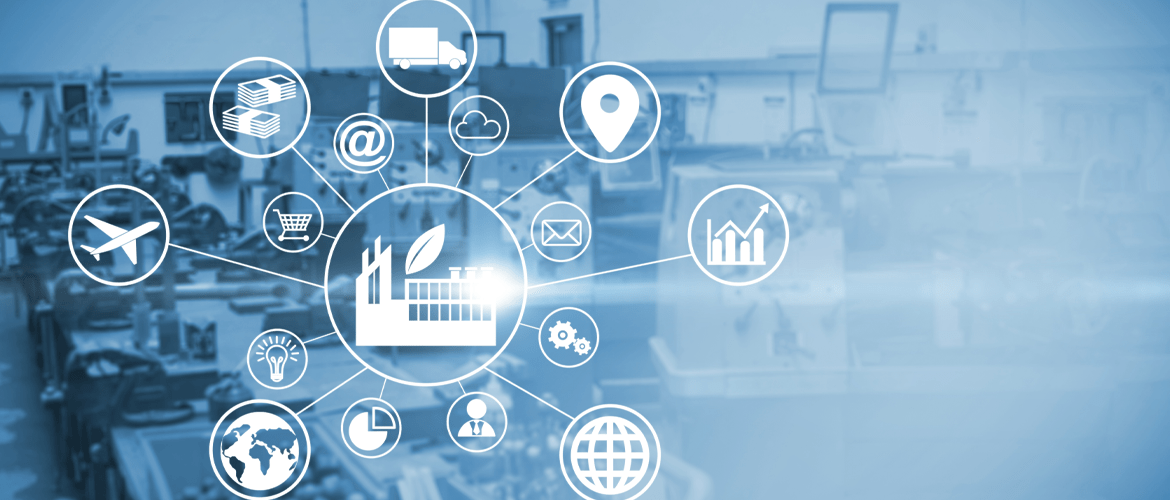Aegis Software Briefing – Moving Up Market and Embracing IIoT
Andrew Hughes and I were recently briefed by the Aegis Software executive team. It has been nearly a year since LNS Research had its last in depth briefing with Aegis Software, and at that time Aegis was still working to win its first beachhead clients outside electronics manufacturing. Also, it had not yet formalized the strategy for embracing Industrie 4.0 and IIoT.
In the past 10 months Aegis Software has been very busy.
Company Background
Since I first started covering the company in 2008 I have always been impressed with the company’s customer first approach and clear understanding of what MOM/MES software should and shouldn’t be. Since that time, the company has re-written its software from the ground up (2013) to both embrace modern web/mobile architecture and extend from its stronghold in PCB manufacturing to finished assembly for discrete manufacturing.
Moving into Discrete Manufacturing from Electronics
Although it took several years, the company now has its first referenceable customers in final assembly for defense systems, aircraft assembly, and industrial equipment. Although it is still early days, with these lessons learned, Aegis Software is now well positioned to begin mounting a challenge to industry incumbents.
Aegis Software is also making some interesting moves in its connectivity solution for the EMS market and especially in its ability to connect with many different SMT machine vendors. Jason Spera, CEO Aegis Software, is a technologist at heart, but has proven to be a talented leader that puts the needs of customers first.
IIoT Connectivity
This approach is nowhere more apparent than in the company’s strategy in IIoT connectivity. Aegis currently has a leadership position in machine connectivity for electronics manufacturing. In other industries, companies with such positions are looking to maintain the connectivity advantage from machine to server, but change the way information is passed to higher level systems, becoming an IIoT gateway (think Kepware).
Not Aegis.
Jason Spera is Chair of an IPC industry committee that has brought together over 30 tier-one manufacturers and manufacturing machine/device vendors to define a true plug and play standard for the IIoT in the industry. Although LNS expects it to be a challenging exercise to drive standards across this set of companies; such an approach would deliver great benefits for the industry at large and hopefully will be embraced by all members of groups, like the IPC. If it proves successful over the coming years, it could even prove to be an effective model for other industries.
At a time when new companies are launching 100% Cloud Manufacturing Execution Systems (MES) for high speed manufacturing and many other MOM/MES vendors are starting to promote hybrid or modular approaches to incorporate the cloud into factory operations; Aegis is staying customer-focused. Although with the 2013 refresh, Aegis now is architected for the Cloud. The company is not actively driving companies towards the Cloud and is not reporting a move among its customers or prospects for use of the Cloud in high speed manufacturing that involves deep machine integration, traceability, and inter-locking processes.
If there was anywhere Aegis could be criticized for not being forward thinking, actively promoting the Cloud into its customer base would be it.
Moving Forward
Aegis Software has not yet been on the radar of many companies outside of electronics manufacturing. Given their technology prowess, customer approach, and ambition, I believe this is going to change soon.
Companies in the market for a discrete on-premise MES should add Aegis to the mix if they haven’t done so already. For more detailed information, please see the forthcoming Manufacturing Operations Management (MOM) Solutions Selection Guide.
Predictive Analytics Remains Hottest Topic in IIoT Space
For well over a year LNS Research has been talking about how Predictive Analytics is the go-to business case for IIoT providers. Both APM and Process Improvement/Optimizations examples abound demonstrating how to generate ROI from the data available from a rich IIoT enabled sensing environment.
This week several LNS analysts including Dan Miklovic and Jason Kasper had our first briefing with Timeli, a new entrant into the Predictive Analytics space that brings a different approach to the market. First of all Timeli has their own historian technology that is totally Cloud based. Second, they have an IIoT analytics platform that sits above their time-series database that also operates in the Cloud.
One twist to their approach is that they also can feed data from traditional historians like OSIsoft’s PI historian into their analytics models, so clients don’t lose what may be years of historical data. Since their licensing model is based on an assets data stream, and with the Cloud deployment, cost to deploy is typically much lower than many of the tag-count based licensing models used by historian providers today. Timeli is a brand new entrant into the market, but with their Cloud approach, powerful learning based analytics engine, and scalable licensing approach they definitely bear watching.
Access this NEW eBook, "Manufacturing Metrics in an IoT World: Measuring the Progress of the Industrial Internet of Things," presents results from the fourth iteration of the biennial Metrics that Matter research study conducted between LNS Research and MESA International. It places particular focus on what IIoT means to manufacturers in the MOM space.
Sign up for our blog
Stay up-to-date on the latest in manufacturing trends, insights and best practices.





